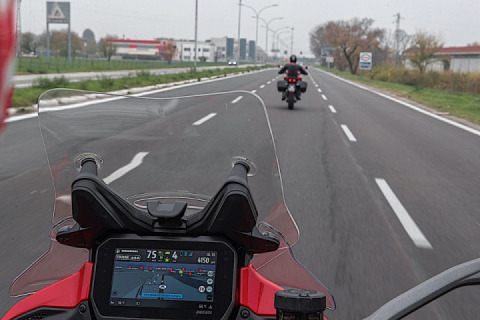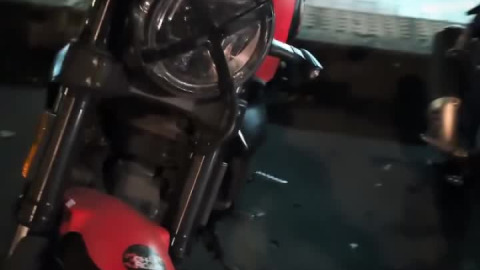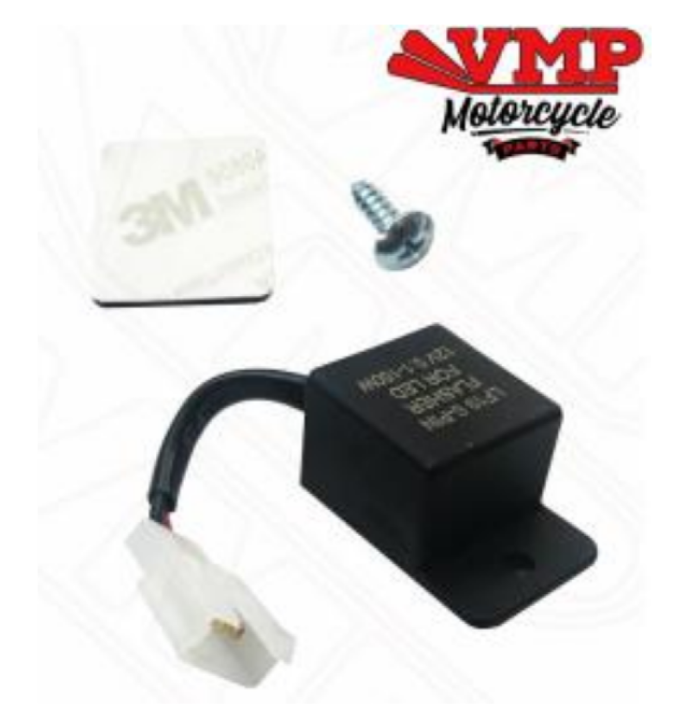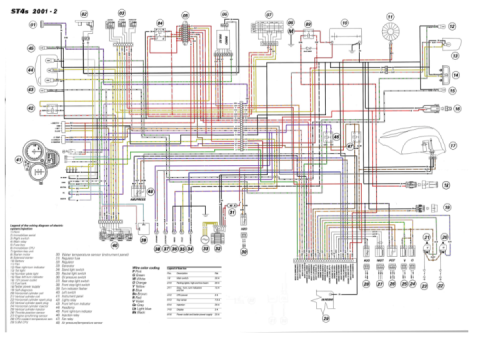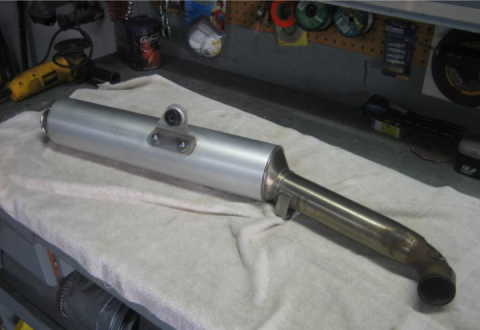DUCATI - Charging System Diagnosis Procedure
Summary: My charging system diagnosis procedure, modified over time to generally point out the problem through a series of steps. I try to follow it every time, as that way I don’t miss anything silly.
I replied to a forum post somewhere regarding how I diagnose charging system faults, and I thought I'd best copy it to a word document so I could simply copy and paste if I needed it again. Then I edited the mistakes out and figured I might as well just post it here. I hope it helps de-mystify the process for some. I'm not overly electrically minded, but as with most diagnosis it's simply fault finding by process. I find that I only ever get into trouble if I rush and forget the procedure. Following are the checks I do.
Visual:
Check regulator - the single phase Ducati (2 yellow wires) often leak black goo or have large holes in the back of them. 3 phase Shendengan generally don't.
Check yellow wires from alternator for melting and connector burning. The 3 pin white terminal will melt if used as a two pin connector on a single phase system as per the upgrade kits. Almost guarantee it. Moto Guzzi Breva 750 among other models also use this white connector with a Ducati Electronica single phase system, and I have seen them burn similarly.
The yellow wires often get green corrosion on them under the insulation, which has usually turned whitish and brittle. I tend to cut it back until it's nice and new looking if possible, but it's not really necessary ime.
Check other wires out of regulator to battery.
Check maxi fuse.
Battery:
Charge with a real charger (not a trickle charger) and load test once charged. If it won't hold load, replace it. You need a fully charged battery to diagnose the system.
Multimeter:
Check for continuity between the two or three alternator wires. Should have some with very low resistance. For clarity lets say 0 ohms.
Check for continuity between alternator wires and ground. Should be none.
Check for continuity between the regulator output positive (red) wire and the battery positive terminal. This will also show up a blown maxi fuse.
Check for continuity between the regulator output negative (black or green) wires and the battery negative terminal on the 3 phase systems, or between the regulator body/earth wire and the battery negative terminal on a single phase system.
Check alternator AC output between yellow wires. This test is carried out with the yellow wires from alternator to regulator disconnected. Hook the multimeter leads into the two (or two of the three) yellow leads from the alternator with meter set to AC and read the voltage. It should get to 70Vac fairly quickly. On a 3 phase system check between all combinations of two yellows.
Fit a dc rectifier between the yellows and battery. This directly charges the battery, and will show you whether or not the alternator can produce under load, which the ac test doesn't. Battery voltage should climb over 15v at quite low rpm. Don’t hold it above 15v for too long, but certainly make sure it can get there. I usually raise the rpm until I see 16 or 17, and then shut it off straight away.
If everything so far has passed, replace the regulator.
Other info
I always use round bullet terminals for the yellow alternator to regulator connection in the same size as the originals on the Ducati single phase systems. They’re very reliable if kept clean and lubed. Do not use flat spade terminals for the yellow alternator to regulator connection on a single phase system. Even when not in a connector, I’ve never seen them last. Always cover the alternator to regulator terminals with heat shrink too. Pretty much lube every terminal and connector, and heat shrink all bullet or individual terminal connections.
Some people like to solder the yellow alternator to regulator wires together instead of using connectors. I don’t, as it’s something you can’t undo and reconnect easily without the correct tools if you have to. The round bullet terminals are so reliable I see no point.
Once you've replaced the regulator, check the voltage at the battery with the engine running. You should get 14.3 or so v.
If not, (I always do this check anyway) check the voltage drop between the regulator output positive (red) wire and the battery positive. This will show you how much voltage drop there is in the wiring loom (including the maxi fuse). It’s common to see 0.5V and sometimes more here.
Do the same check for the regulator output negative (black or green) wires and the battery negative terminal on the 3 phase systems, or between the regulator body/earth wire and the battery negative terminal on a single phase system. This is usually much lower, but again definitely worth checking.
I often run a jump wire on a single phase system from regulator body to the battery negative terminal and check the battery voltage with the jump on and off. This will tell you if the earth at the regulator body is bad.
If you get voltage drops I run extra wires from the regulator to the battery. Given I always replace single phase regulators with the 3 phase Shendengan SH579 that is fitted to the 3 phase bikes as std (just cut one of the yellows at the regulator short under the sheath and leave unconnected) you don’t need to earth the regulator body. But if there is a wire there you might as well fit it to a mounting screw. Saves people seeing a wire dangling and thinking something is wrong. Just run extra earth wires from the regulator 4 pin connector (2 greens are earth) back to the battery. I usually go to the frame ground point as well if it’s on the way, such as on a pre 2002 Monster. Just make sure you scrape the frame paint off and grease the terminals and frame.
For the positive wires I run from the 2 red wires on the regulator 4 pin connector back to the maxi fuse (using new terminals) and from the maxi fuse to the battery. People who know more than me about this stuff say there’s no need to include a fuse in this circuit, but I like to keep it if I can (i.e., have the right terminals)
This way you end up with one more terminal per post at the battery, but sometimes you pick up more voltage than you’d expect. With a good regulator, a good battery and fresh wiring I always see 14.2 – 14.3V at the battery.
I leave the old maxi fuse terminals connected, just cover them with heat shrink and zip tie out of the way. Same with positive (red) and two wire flat connectors that went to the old single phase regulator. That way the loom is still original as some people like them to remain that way.
Note: With the SH579 you lose the battery light on the dash. This upsets some people.
If you use an original style or Electrex or other single phase regulator that uses a reference voltage input (the two wire flat connector has one wire to run the light, the other is a reference) then you need to make sure the reference is accurate. This reference is switched through the ignition switch and runs through the loom. If the reference is low, due to the resistance that naturally builds up in an old loom, the regulator will think the battery voltage is lower than it actually is and it will overcharge the battery. I think it’s the white/red wire (or maybe pink?).
You can either check the voltage in this wire or (better) run a jump wire from the battery positive to the connector. I pull the connector apart enough that it’s still connected, but you can touch the terminal. Then, with the engine running and while checking the battery voltage, touch the jump wire to the terminal. If the battery voltage drops instantly (and it will if it’s overcharging) the easiest fix is to cut the reference wire on the loom side of the two wire flat connector, fit a relay running battery power direct to this wire into the regulator and switch the relay on with the loom side of the reference wire coming from the ignition switch. 906 Paso have done this for years, and I’ve seen a few Monsters and SS do it.
The SH579 3 phase regulator doesn’t use a reference, so fitting one does away with this potential issue.
I've not used a FH series Shendengan mosfet style reg yet, but only because I haven't actually got to order any. I keep meaning too. The Multi 1200 uses a mosfet reg.

 Follow
2.3K
Follow
2.3K




